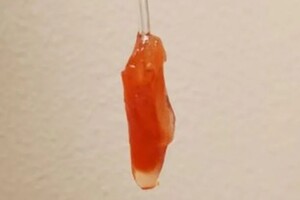The grown part can be used to study the development of heart diseases.

Scientists managed to grow a tiny but working a model of the ventricle of the human heart. As Science Alert reports, this is an important step on the way to developing new drugs and treatment methods, as well as studying the process of heart disease development.
Thanks to the new model, scientists will be able to get a more accurate and ethical alternative to existing methods.
Read also: Scientists told how much heat the human body can withstand
Scientists from the University of Toronto and the University of Montreal have created a small vessel at the bottom of which the heart chamber of a human embryo beats and pumps fluid. This allows scientists to measure the volume of fluid ejected when the ventricle contracts, as well as the pressure of that fluid.
There are only a few ways to study how a diseased or healthy heart pumps blood. Organs that were removed during the autopsy allow you to see the structure of the heart without dynamics. Tissue cultures can shed light on biochemical functionality, but they do not fully capture the hydraulics of a three-dimensional pulsating mass.
Research on animal hearts is unethical. In a new study, scientists have grown a tiny organ using a mixture of biological and synthetic materials. The cells themselves were obtained from cardiovascular tissue from young rats and then grown on a layer of scaffolding printed from a polymer with grooves to guide tissue growth.
This flat grid made the structure mimic the arrangement of the heart muscle fibers of the left ventricle human – a bulky end chamber from which blood is ejected into the aorta with one strong squeeze.
To make the structure look like a pulsating chamber, the team used a cone-shaped rod they called a mandrel. A series of small electrical shocks was required for the model ventricle to start beating.
The inner diameter of the ventricle is only 0.5 mm, and it is able to push fluid at a pressure of only 5% of the pressure of an adult human heart. But still, it is a demonstration that the scientists' method works, and in the future it can be used to grow large models of the human heart.
Earlier scientists from Japan's Yamanashi University were able to clone mice from dried and frozen cells the skins of their tails. The skin cells have been dried using a process called freeze drying.
Important! This publication is based on the latest and current scientific research in the field of medicine and has an exclusively general informational character. The publication cannot be the basis for establishing any diagnoses. If you are sick or need a diagnosis, see a doctor!




